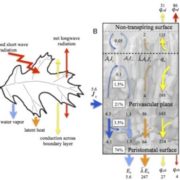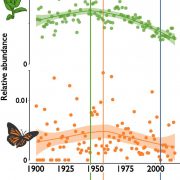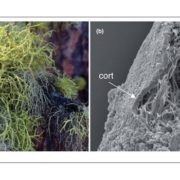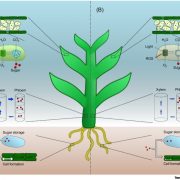Review: On tree longevity (New Phytol)
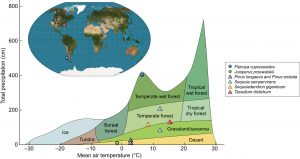 Everyone enjoys hearing about ancient trees that have been alive since various events in human history, but did you ever stop to wonder why some trees live for millennia and others don’t? If so, you’ll want to read this Tansley Review by Piovesan and Biondi. One of their first observations is that in principle, trees don’t naturally die, but instead are killed by extrinsic factors; the long-lived ones escape being killed off. A few additional observations: maximal lifespans of conifers are approximately 10x greater than angiosperms, the biggest or fastest-growing trees are almost never the oldest, very old trees are often visually distinctive with numerous dead branches, flattened tops, and partial cambial dieback resulting in bark stripping (where a tree no longer forms a complete circle). The authors address characteristics of long lived trees including the environments in which they are found, and ecological and evolutionary questions raised by them (for example, is there a selective advantage associated with extreme old age?). Finally, given the importance of climate on longevity, will long-lived trees be found in the future? This is a captivating review and one that would certainly be of interest to most students. (Summary by Mary Williams @PlantTeaching) New Phytol. 10.1111/nph.17148
Everyone enjoys hearing about ancient trees that have been alive since various events in human history, but did you ever stop to wonder why some trees live for millennia and others don’t? If so, you’ll want to read this Tansley Review by Piovesan and Biondi. One of their first observations is that in principle, trees don’t naturally die, but instead are killed by extrinsic factors; the long-lived ones escape being killed off. A few additional observations: maximal lifespans of conifers are approximately 10x greater than angiosperms, the biggest or fastest-growing trees are almost never the oldest, very old trees are often visually distinctive with numerous dead branches, flattened tops, and partial cambial dieback resulting in bark stripping (where a tree no longer forms a complete circle). The authors address characteristics of long lived trees including the environments in which they are found, and ecological and evolutionary questions raised by them (for example, is there a selective advantage associated with extreme old age?). Finally, given the importance of climate on longevity, will long-lived trees be found in the future? This is a captivating review and one that would certainly be of interest to most students. (Summary by Mary Williams @PlantTeaching) New Phytol. 10.1111/nph.17148


